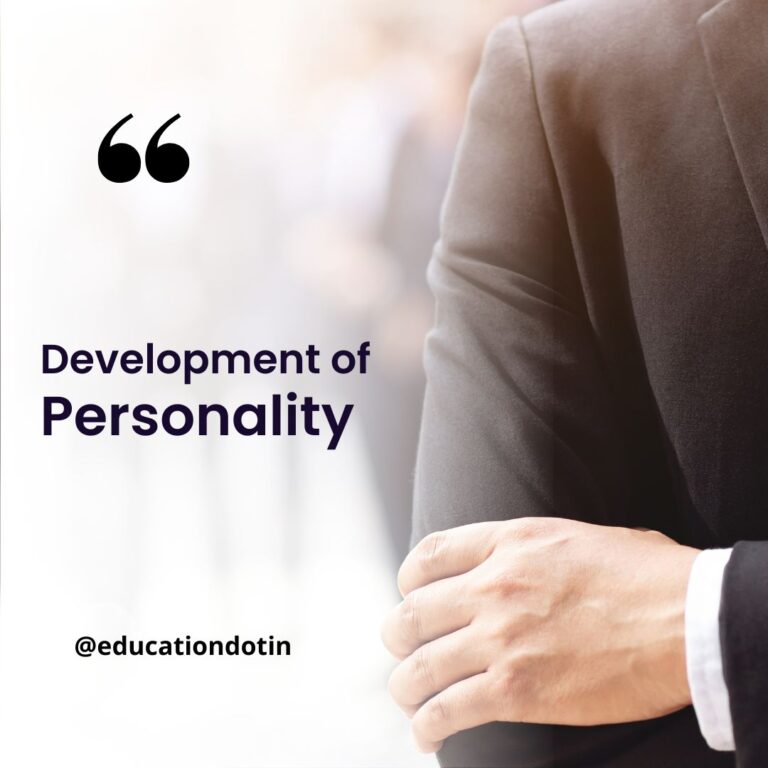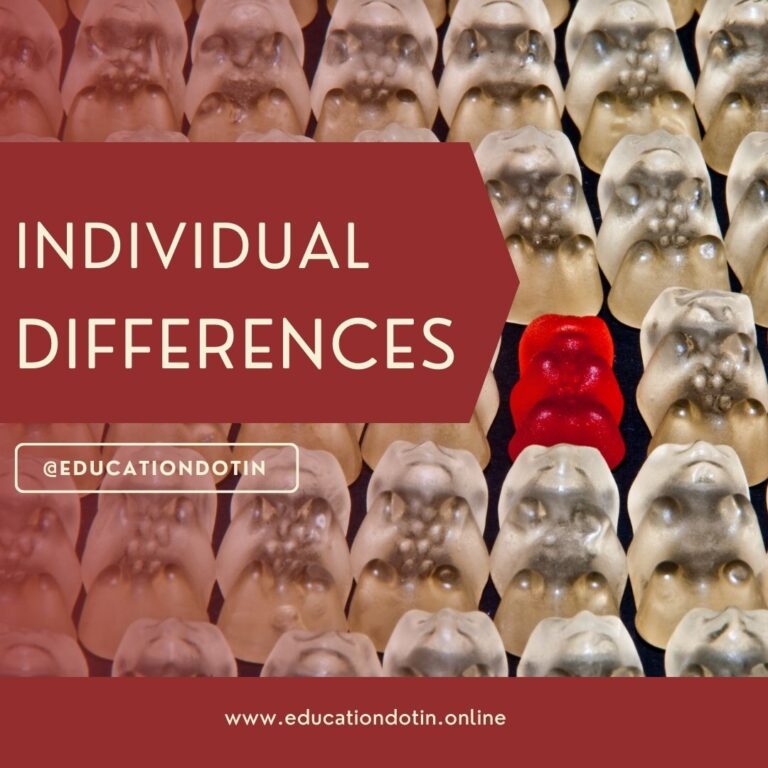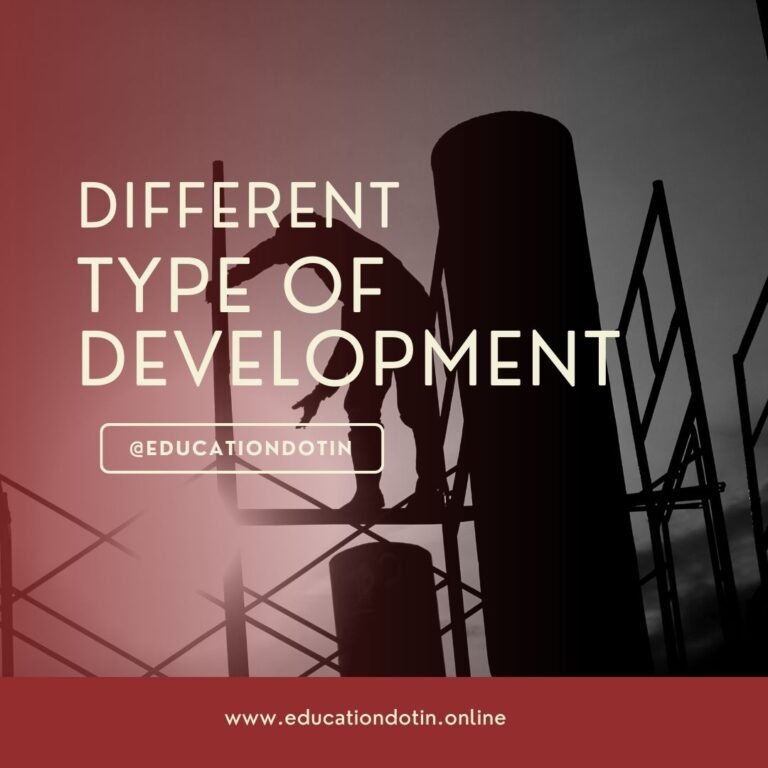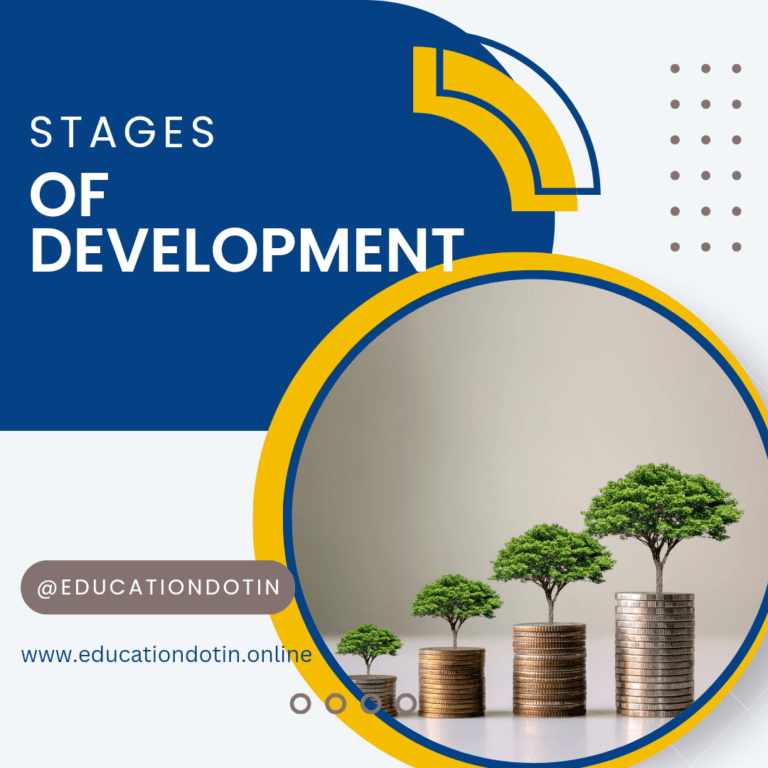Growth and Developmental pattern of learners
The changes and progressions that take place in people as they grow older and pick up new talents, skills, and information throughout their lifetimes are referred to as the growth and developmental patterns of learners. These patterns cover the physical, cognitive, emotional, and social realms of human growth, among other elements. For educators and carers to offer the right support and direction to students at different phases of their development, it is essential to understand these patterns.
Physical Development:
The development of the body’s size, shape, and motor abilities is referred to as physical development. Early childhood is a time of fast physical growth, with noticeable gains in weight and height. Children go through a growth spurt as they approach puberty, which is characterized by notable changes in height, muscular mass, and secondary sexual traits. Adulthood sees a stabilization of physical progress before the ageing process causes a slow loss in physical capabilities.
Cognitive development:
refers to the mental faculties and methods that people employ to comprehend and communicate with their environment. According to Jean Piaget’s theory of cognitive development, children pass through four phases as they develop their cognitive abilities: sensorimotor (0–2 years), preoperational (27–37 months), concrete operational (seven–11 months), and formal operational (11+ months). Each step results in a distinct improvement in a particular cognitive skill, such as object permanence, conservation, logical reasoning, and abstract thought.
Emotional development
is the process by which people identify, comprehend, and control their own emotions as well as how they perceive and react to the emotions of others. Early on in life, feelings are expressed honestly and may change quickly. Children have greater emotional control and empathy as they age. Adolescents frequently have heightened emotions and may struggle with socialization and identity development. Adults continue to develop emotionally, becoming more adept at controlling their own emotions and comprehending those of others.
Social Development:
Social development refers to the improvement of interpersonal connections and interactions. The formation of attachments with carers plays a crucial role in infant social development. Parallel play is something that toddlers and preschoolers start doing as they increasingly learn social skills like sharing and taking turns. Peer connections and the development of an identity within a social setting receive a lot of attention during adolescence. Building and keeping friendships, sexual relationships, and managing professional networks are all ways that adult social growth continues.
Moral Development:
A person’s sense of good and wrong as well as their capacity for moral decision-making evolve over time. According to Lawrence Kohlberg’s theory of moral development, there are three stages that people might go through: pre-conventional, conventional, and post-conventional. Early on, moral choices are motivated by the desire to avoid punishment and obtain rewards. As people get older, their moral judgements are more heavily influenced by ethical principles and societal conventions.
Language and Communication:
A learner’s progress depends greatly on their ability to communicate and use language. Beginning with cooing and babbling, infants gradually hone their language understanding and communication skills. They develop the ability to express themselves clearly and employ increasingly sophisticated linguistic devices as they get older. In order to acquire information and communicate effectively, reading and writing abilities become crucial in formal education.
It’s crucial to understand that growth and development patterns are not set in stone schedules and that people can develop at different rates and exhibit diverse traits. As a result, in order to meet the different requirements of students and build an atmosphere that fosters growth, learning, and general development, educators and carers must use flexible and individualized approaches.
Development and its characteristics
Concept of Growth and Development:
The processes of quantitative and qualitative changes that people go through over time are referred to as the “growth and development” idea.
-
Growth:
Physical changes such an increase in height, weight, and complexity are the main effects of growth. It is quantifiable and is seen in a variety of circumstances, including biological, financial, and organizational ones. For instance, in biological growth, people, plants, and animals gradually increase in size and maturity. The expansion of a nation’s production and consumption of goods and services is referred to as economic growth. The expansion and achievement of companies or institutions is referred to as organizational growth.
-
Development:
Development is a more general idea that includes qualitative changes in a variety of areas, such as the physical, cognitive, emotional, social, and moral facets. It entails gaining new abilities, skills, and information, which increases complexity and flexibility. Cognitive development is concerned with how people reason, learn, and think. Understanding and controlling emotions are important components of emotional growth. Social development is the process of learning how to interact with others and creating deep connections. The creation of ethical values and decision-making processes is a component of moral growth.
Growth and development are continuous processes that interact and have an impact on one another. They are essential for people’s general success, ability to succeed, and capacity to adjust to changing surroundings. In educational, familial, and societal contexts, proper support and nurturing of growth and development are critical to ensure that individuals reach their full potential and lead fulfilling lives.
Characteristics of Growth:
- Quantitative Nature: Changes in physical size, weight, or quantity are measured and visible during the course of growth, which is a quantitative process. This can be observed in living things as a growth in size, mass, or cell count. An increase in Gross Domestic Product (GDP) or Gross National Product (GNP) is the economic indicator of growth. Growth is quantifiable, which makes it possible to monitor and evaluate alterations over time.
- Continuous Progression: Growth is a process that happens continuously and gradually. It involves small adjustments that accumulate over time. In biological development, for instance, a baby develops into a toddler, then a kid, and finally an adult, with each stage building on the one before it. This continuity is essential for achieving full potential in various aspects of life.
- The direction of growth: Depending on the situation, growth might be unidirectional, bidirectional, or multidirectional. When it comes to biological growth, it is frequently unidirectional, with people typically getting bigger and more sophisticated as they age. It is possible for economic growth to be bidirectional, varying between expansionary and deflationary phases. Personal development can have multiple directions and involve ups and downs in various facets of life.
4. Genetically Controlled: Growth in living things is frequently influenced by genetics. The timing, velocity, and size of an organism’s growth are all governed by its genes, which serve as its developmental manual. Individual variances in growth patterns can be caused by environmental factors that affect how these genes are expressed.
- Affected by Environmental Factors: Environmental factors have a considerable impact on growth in addition to genetic factors, which also play a large role. Important elements influencing physical growth in living beings include nutrition, health, and living environment. Market conditions, technical developments, and governmental regulations all have an impact on economic growth.
Characteristics of Development:
1. Qualitative nature: Development involves qualitative changes in talents, skills, and behaviours, as opposed to growth, which is predominantly quantitative. It includes the development of new skills and abilities. For instance, while emotional growth entails more emotional awareness and management, cognitive development involves the acquisition of information, problem- solving skills, and memory ability.
- Stage-like Progression: Growth frequently takes place in a series of stages or progressions. People normally go through several developmental periods or milestones, and certain abilities must be attained before progressing to the following level. According to Piaget’s theory of cognitive development, for instance, kids go through phases like the sensorimotor, preoperational, concrete operational, and formal operational stages as they develop cognitively.
- Lifelong Journey: An individual’s development is a lifetime endeavour that starts at conception and lasts the whole of their life. Although the rate and degree of development may change depending on the stage of life, it never actually ceases. While adolescence and maturity bring more subtle changes and ongoing learning, infancy and childhood are characterized by fast growth and development.
4. Contextual Influence: The social, cultural, and environmental context in which a person develops and interacts has a
significant impact on that person’s development. The environment offers chances for education and behaviour modification. For instance, a person’s surroundings has a big impact on how they develop their language skills.
- Multifaceted Development: Development involves different facets of a person’s existence and is not restricted to a single domain. Physical, cognitive, emotional, social, and moral development are among these domains. Holistic development can result from interactions between and influences on the progress made in different disciplines.
- Individual Differences: Every person develops at a different rate and has different developmental patterns. Development can be impacted by individual variations such as temperament, personality, and life events. Because of these variations, each person’s developmental journey is unique and varied due to these characteristics.
An individual’s maturation and acculturation to the outside world are influenced by the interconnected and varied processes of growth and development. Development includes qualitative increases in knowledge, skills, and capacities across a range of fields, as opposed to growth, which entails quantifiable changes in size and quantity. Knowing these traits enables us to recognize the complexity and individuality of human development and influences how we assist people in realizing their full potential.
Social factors that affect growth and development
Social variables are essential in determining how an individual develops and grows. These elements have to do with the social setting in which an individual lives and interacts with others. From infancy to adulthood, social variables have a substantial impact on a variety of developmental domains, including moral, social, emotional, and cognitive development. Here are a few significant social variables influencing growth and development:
- The family and parenting styles: During early life, the family serves as the main social unit, and parenting practises have a significant impact on a child’s development. While harsh or inattentive parenting can have a negative impact on a child’s emotional and behavioural development, warm and loving parenting promotes emotional security and healthy self-esteem.
- Peer interactions: As kids age, peer interactions take on more significance. Peer interactions offer chances for social learning, conflict resolution, and the improvement of collaboration and communication abilities. Strong peer interactions can support children’s emotional and social growth.
- Education and School Climate: Academic and cognitive development can be strongly impacted by having access to high-quality instruction and a positive school climate. A love of learning and intellectual development are fostered by effective teachers, suitable instructional materials, and a supportive school environment.
- Socioeconomic Status: SES can affect a number of development-related factors. Children from low-income homes may experience difficulties gaining access to opportunities and resources, which could affect their cognitive and social development. Higher SES is frequently linked to more successful educational outcomes and better health outcomes.
- Cultural Norms and Values: A person’s ideas, attitudes, and behaviour are influenced by their cultural norms and values. Through cultural socialization, which can have an impact on moral and social development, children acquire social standards, moral principles, and appropriate behaviour
- Media and Technology: In the digital age, media and technology have a significantly greater impact on growth and development. Depending on the type and calibre of the media, exposure can have an effect on social interactions, behaviour, and cognitive development.
- Community and Neighbourhood: Through resource availability, social support, and exposure to crime or violence, the community and neighbourhood environment can have an impact on development. While unfavourable settings can cause stress and harmful effects, safe and friendly neighbourhood promote healthy growth.
- Gender Roles and Expectations: Children’s perceptions of what constitutes suitable behaviour for males and females can be influenced by societal gender roles and expectations. These gender norms have an impact on how people connect with one another and build identities, which affects emotional and social growth.
- Social Support: Fostering resilience and coping mechanisms need social support from friends, family, and other social networks. The impacts of stress and hardship can be mitigated by a strong support network, which will benefit emotional and cognitive growth.
- Cultural and Social Identity: A person’s self-concept and emotional wellbeing are greatly influenced by the development of their sense of cultural and social identity. A person’s entire growth and development can be positively impacted by embracing their cultural background and social group membership.
It is critical to understand how social variables interact with other elements, including genetics and personality traits, to affect growth and development. Individual differences can be decreased and positive development outcomes can be promoted by addressing social variables via supportive environments, resources, and community programme
Do follow us on instagram | youtube








